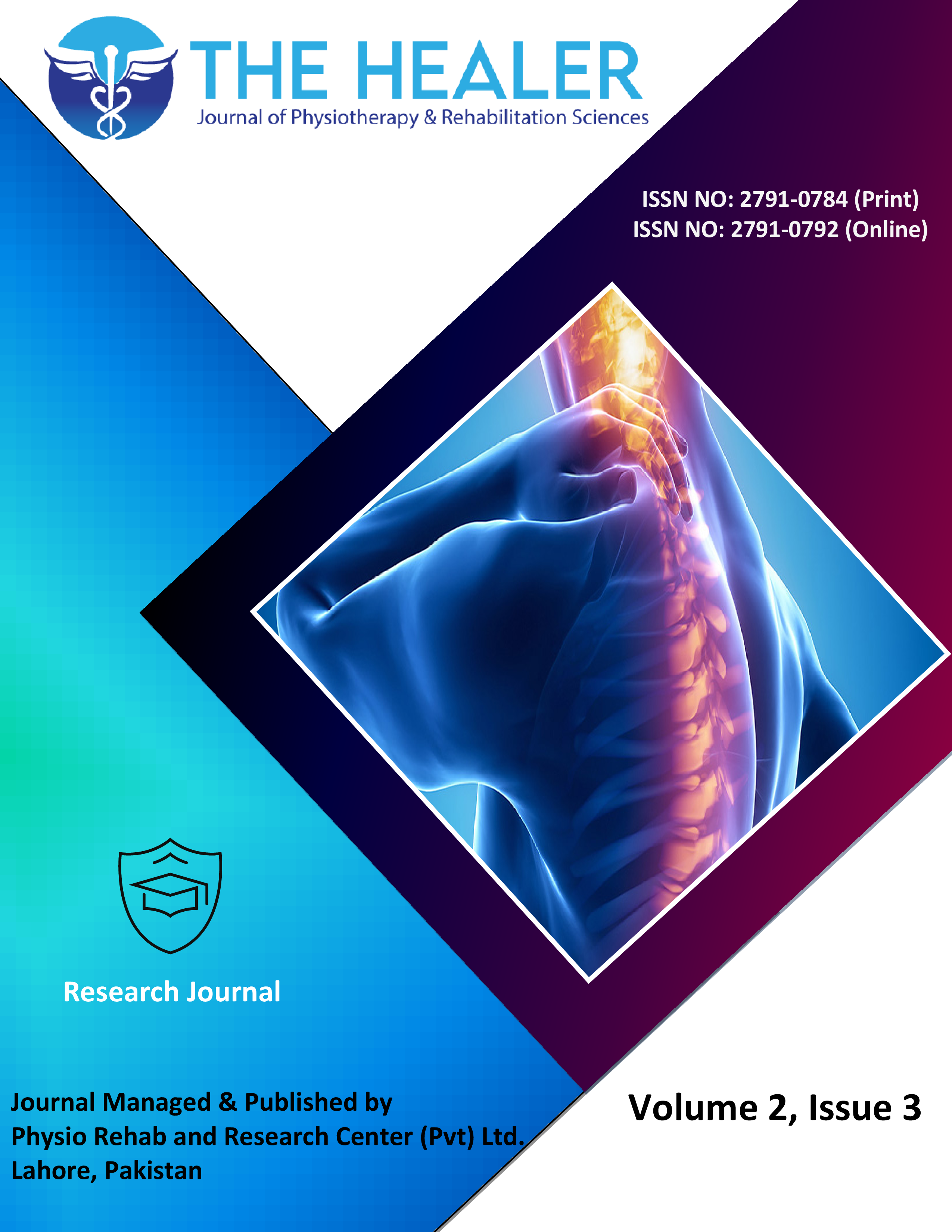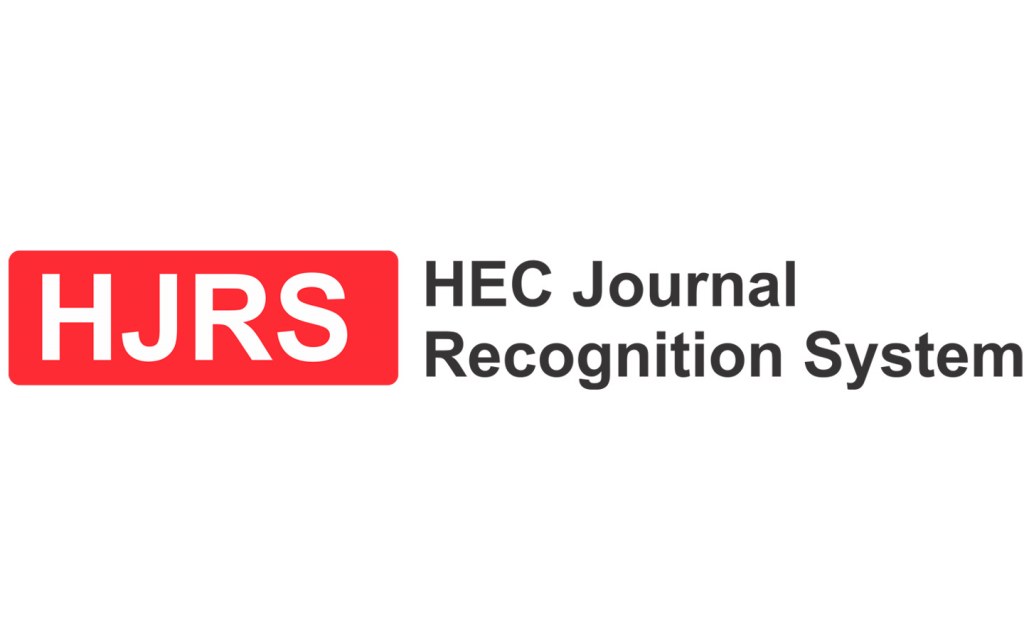Obesity and Overweight in Women with Knee Osteoarthritis Secondary to Menopause
Obesity in Knee Osteoarthritis & Menopause
DOI:
https://doi.org/10.55735/hjprs.v2i3.66Keywords:
knee osteoarthritis, obesity, post-menopauseAbstract
Background: Knee osteoarthritis, a degenerative joint disease, causes pain and stiffness in the knee joint, especially in obese people. Obesity is a significant risk factor for knee osteoarthritis. Objective: To estimate the prevalence of obesity and overweight in post-menopausal women secondary to knee osteoarthritis. Methods: This descriptive cross-sectional study was conducted from January to August 2022. A sample of 223 participants was collected from Aziz Bhatti Shaheed hospital Gujrat, tertiary headquarters hospital Lalamusa & Kharian and National orthopedics hospital Gujrat. Non-probability convenient sampling technique was used to recruit women categorized according to the set criteria of body mass index and waist-to-hip circumference ratio. Anthropometric measurements were taken by using a weight machine and measuring tape. Data were analyzed by using SPSS version 24. For descriptive analysis, mean and standard deviations were calculated for quantitative variables whereas frequency and percentages were used for qualitative variables. Results: Results indicate that out of 223 individuals 52% of participants were overweight, 20.2% participants were obese and 27.8 % participants were of normal weight. The mean age of the participants was 64.2±7.66. Age group and family history of knee osteoarthritis are highly associated with the body mass index of the participants (p<0.001). Family history of knee osteoarthritis and waist-to-hip circumference ratio were significantly associated with each other (p<0.001). Conclusion: The prevalence of overweight women is high and the calculated prevalence of obesity in people with knee osteoarthritis is relatively low. These findings are related to the age group and family history of the condition. Thus, obesity and being overweight are major contributors to knee osteoarthritis.
References
KANG K-T, KOH Y-G, LEE J-A, et al. Computational biomechanics of knee joint arthroplasty: a review. 2020;7(1):19-00338-00319-00338.https://doi.org/10.1299/mer.19-00338
Primorac D, Molnar V, Rod E, et al. Knee osteoarthritis: a review of pathogenesis and state-of-the-art non-operative therapeutic considerations. 2020;11(8):854.https://doi.org/10.3390/genes11080854
Godziuk K, Prado CM, Woodhouse LJ, et al. The impact of sarcopenic obesity on knee and hip osteoarthritis: a scoping review. 2018;19(1):1-10.https://doi.org/10.1186/s12891-018-2175-7
Kulkarni K, Karssiens T, Kumar V, et al. Obesity and osteoarthritis. 2016;89:22-28.https://doi.org/10.1016/j.maturitas.2016.04.006
Sowers MR, Karvonen-Gutierrez CAJCoir. The evolving role of obesity in knee osteoarthritis. 2010;22(5):533.https://doi.org/10.1097/bor.0b013e32833b4682
Kozakowski J, Gietka-Czernel M, Leszczyńska D, et al. Obesity in menopause–our negligence or an unfortunate inevitability? 2017;16(2):61.https://doi.org/10.5114/pm.2017.68594
Hanna FS, Wluka AE, Bell RJ, et al. Osteoarthritis and the postmenopausal woman: epidemiological, magnetic resonance imaging, and radiological findings. Seminars in arthritis and rheumatism: Elsevier 2004:631-636.https://doi.org/10.1016/j.semarthrit.2004.07.007
Casilda-López J, Valenza MC, Cabrera-Martos I, et al. Effects of a dance-based aquatic exercise program in obese postmenopausal women with knee osteoarthritis: a randomized controlled trial. 2017;24(7):768-773.https://doi.org/10.1097/gme.0000000000000841
Schlenk EA, Lias JL, Sereika SM, et al. Improving physical activity and function in overweight and obese older adults with osteoarthritis of the knee: a feasibility study. 2011;36(1):32-42.https://doi.org/10.1002/j.2048-7940.2011.tb00063.x
Runhaar J, van Middelkoop M, Reijman M, et al. Prevention of knee osteoarthritis in overweight females: the first preventive randomized controlled trial in osteoarthritis. 2015;128(8):888-895. e884.https://doi.org/10.1016/j.amjmed.2015.03.006
Kim HI, Ahn SH, Kim Y, et al. Effects of Sarcopenia and Sarcopenic Obesity on Joint Pain and Degenerative Osteoarthritis in Postmenopausal Women. 2021.https://doi.org/10.1038/s41598-022-17451-1
Nur H, Tuncer TJTJoPM, Rehabilitation. The relationship between body composition and knee osteoarthritis in postmenopausal women. 2018;64(2):121.https://doi.org/10.5606/tftrd.2018.1496
Grotle M, Hagen KB, Natvig B, et al. Obesity and osteoarthritis in knee, hip and/or hand: an epidemiological study in the general population with 10 years follow-up. 2008;9(1):1-5.https://doi.org/10.1186/1471-2474-9-132
Rogers MW, Wilder FVJBmd. The association of BMI and knee pain among persons with radiographic knee osteoarthritis: A cross-sectional study. 2008;9(1):1-6.https://doi.org/10.1186/1471-2474-9-163
Reidpath DD, Cheah JC-H, Lam F-C, et al. Validity of self-measured waist and hip circumferences: results from a community study in Malaysia. 2013;12(1):1-5.https://doi.org/10.1186/1475-2891-12-135
Suh D, Han K, Hong J, et al. Body composition is more closely related to the development of knee osteoarthritis in women than men: a cross-sectional study using the Fifth Korea National Health and Nutrition Examination Survey (KNHANES V-1, 2). 2016;24(4):605-611.https://doi.org/10.1016/j.joca.2015.10.011
Zhou M, Chen J, Wang D, et al. Combined effects of reproductive and hormone factors and obesity on the prevalence of knee osteoarthritis and knee pain among middle-aged or older Chinese women: a cross-sectional study. 2018;18(1):1-9.https://doi.org/10.1186/s12889-018-6114-1
Chung GK, Ruby H, Woo J, et al. Accelerated progression of waist-to-hip ratio but not body mass index associated with lower socioeconomic position: a cohort study of nonobese early postmenopausal Chinese women. 2020;27(5):550-558.https://doi.org/10.1097/gme.0000000000001503
Koch E, Bogado M, Araya F, et al. Impact of parity on anthropometric measures of obesity controlling by multiple confounders: a cross-sectional study in Chilean women. 2008;62(5):461-470.http://dx.doi.org/10.1136/jech.2007.062240
Zheng H, Chen CJBo. Body mass index and risk of knee osteoarthritis: systematic review and meta-analysis of prospective studies. 2015;5(12):e007568.https://doi.org/10.1136/bmjopen-2014-007568
Raud B, Gay C, Guiguet-Auclair C, et al. Level of obesity is directly associated with the clinical and functional consequences of knee osteoarthritis. 2020;10(1):1-7.https://doi.org/10.1038/s41598-020-60587-1

Downloads
Published
How to Cite
License
Copyright (c) 2022 The Healer Journal of Physiotherapy and Rehabilitation Sciences

This work is licensed under a Creative Commons Attribution 4.0 International License.
CC BY












